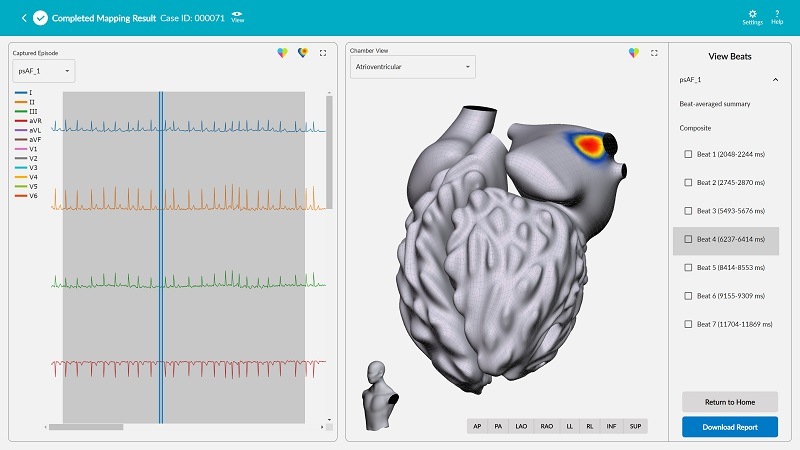 Vektor Medical has announced the publication of a peer-reviewed manuscript of the clinical data from a study evaluating the accuracy of its vMap technology in Circulation: Arrhythmia and Electrophysiology.
Vektor Medical has announced the publication of a peer-reviewed manuscript of the clinical data from a study evaluating the accuracy of its vMap technology in Circulation: Arrhythmia and Electrophysiology.
The system, which was cleared by the US Food and Drug Administration (FDA) in November 2021, demonstrated high accuracy for vMap in identifying arrhythmia sources throughout the heart, the company said in a press release.
The mapping system uses the information found in a 12-lead electrocardiogram (ECG) and provides physicians with accurate and actionable insights to treat cardiac arrhythmias. The non-invasive technology aims to improve first-pass ablation success, lower risks from invasive mapping and long fluoroscopy exposure, and reduce procedure times, all of which are expected to reduce healthcare costs associated with ablation.
The blinded, multicentre, independently-adjudicated vMAP study compared the accuracy of vMap in identifying source locations of seven atrial and ventricular arrhythmias, as well as atrial and ventricular pacing to arrhythmia sources identified during the invasive electrophysiology study. System accuracy exceeded pre-specified performance goals in the primary and secondary endpoints:
Regional accuracy for ventricular tachycardia (VT) and premature ventricular complexes (PVC) without structural heart disease and ventricular scar burden <10% (primary endpoint) was 98.7% (74/75 cases, 95% CI: 96.0 – 100%, p<0.001 to reject predefined null hypothesis).
For all enrolled cases (which includes atrial and ventricular fibrillation), regional accuracy (secondary endpoint 1) was 96.9% (247/255 cases, 95% CI: 94.7 – 99.0%, p<0.001 to reject predefined null hypothesis).
Accuracy for all enrolled cases in identifying the exact or neighboring segments (secondary endpoint 2) was 97.3% (248/255 cases, 95% CI: 95.2-99.3%, p<0.001 to reject predefined null hypothesis).
Centre-to-centre absolute spatial accuracy across all arrhythmia subgroups was 15 mm [Interquartile range: 7–25 mm]. The median analysis time from ECG data upload into the system and ending with display of the mapping results was 0.8 minutes (IQR: 0.4–1.4 minutes).
“Results of the vMap study surpassed our expectations and serve as further evidence of vMap’s potential to improve ablation success, reduce risk, and shorten procedure time,” said David Krummen, co-founder of Vektor Medical. “We have created this technology with the goal of positively impacting millions of people suffering from cardiac arrhythmias.”
Traditional arrhythmia mapping is often labor- and time-intensive, frequently requiring fluoroscopy for intracardiac navigation, the company added in its press release. vMap aims to improve first-pass ablation success, lower risks from invasive mapping and fluoroscopy exposure, and reduce procedure times. The system may also be used to guide stereotactic ablative radiotherapy for refractory ventricular arrhythmias.







